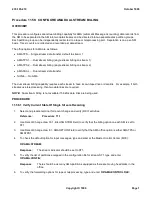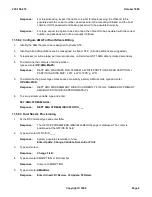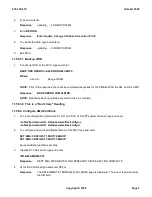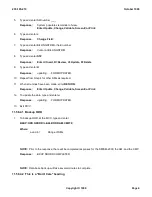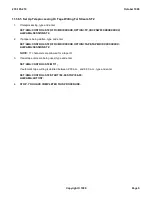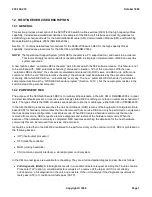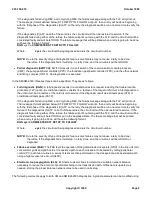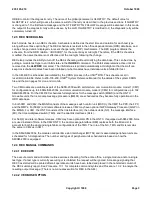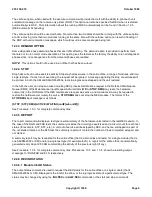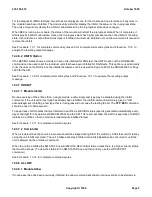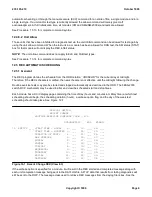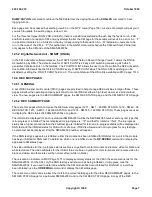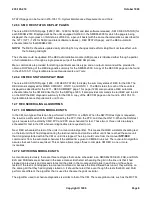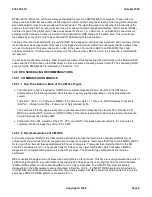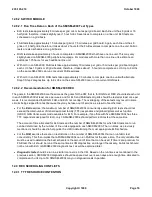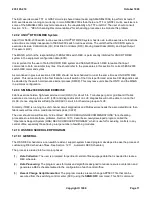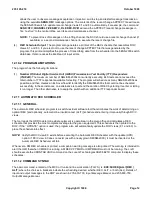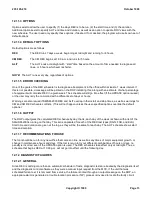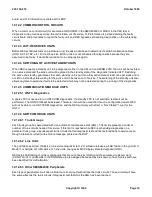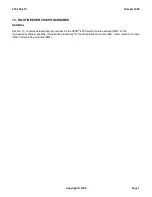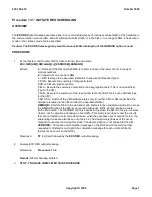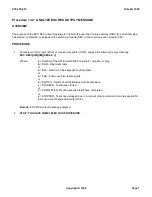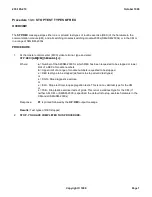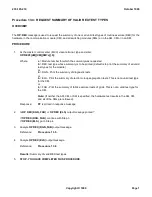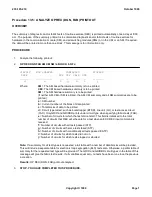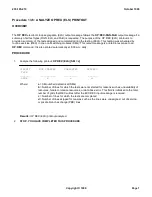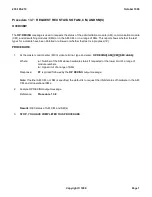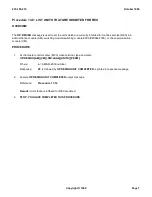
12.8.2 SWITCH MODULE
12.8.2.1 Run Time Data on Each of the SM/SM-2000 Test Types
ELS tests take approximately 8 minutes per grid or 4 minutes per grid board. Each line unit has 8 grids or 16
half grids; therefore, it takes slightly over 1 hour for ELS exercises to complete on a line unit. ELS tests are
scheduled on a grid basis.
FAB tests take approximately 15 minutes per grid or 7.5 minutes per grid board. Again, each line unit has 8
grids or 16 half grids; therefore, it takes about 2 hours for the FAB exercises to complete on a line unit. Fabric
tests are also scheduled on a grid basis.
DGN tests take approximately 3 hours to complete in SMs/SM-2000s that have one line unit. This may vary
slightly based on SM/SM-2000 peripheral equipage. For modules with more than one line unit, estimate an
additional 1.75 hours for each additional line unit.
With LU3 in an SM-2000, FAB tests take approximately 10 minutes per grid or 5 minutes per grid board. Again
each LU3 has 10 grids or 20 grid boards; therefore, it takes about 1.5 hours to complete an LU3. Up to 8 LU3s
on the same SM-2000 can run concurrent FAB exercises.
With LU3 in an SM-2000, DGN tests take approximately 33 minutes to complete one line unit with alternate
Step 1/Step 2 diagnostics. Up to 8 LU3s on the same SM-2000 can run concurrent DGN tests.
12.8.2.2 Recommendation for SM/SM-2000 REX
The goals in the SM/SM-2000 are the same as the goals for the CM; that is, for DGN test, REX should test each unit
in each SM/SM-2000 at least once per week, and for ELS and FAB tests all grids should be tested at least once per
week. It is recommended that DGN, FAB, and ELS not overlap. The overlapping of these tests may result in some
circuits being skipped for a test because they may be taken out of service as a result of another test.
For the
ELS
exercise, the maximum number of SMs/SM-2000s concurrently executing ELS tests should not
exceed the total number of transmission test facility (TTF) responders and global digital services function
(GDSF) GDG transceivers made available for ELS. For example, if an office with five SM/SM-2000s has three
TTF responders assigned for ELS, only 3 SMs/SM-2000s should perform ELS tests at the same time.
The amount of time allocated for ELS tests and the number of SMs/SM-2000s for which ELS tests are to run
can be determined by the number of line units equipped in each SM/SM-2000. The run times, as previously
mentioned, should be used to help guide the craft in determining the most appropriate ELS schedule.
For the
FAB
exercise there are no restrictions on the number of SMs/SM-2000s that can run fabric test
concurrently. This then implies that all SMs/SM-2000s can run FAB test at the same time. The only variable that
must be used to determine the best schedule is the amount of time that can be used. If time is at a premium for
FAB test, then it should be run at the same time as CM diagnostics, and longer if necessary. Fabric test should
not be run with ELS or SM/SM-2000 diagnostic test, as will be explained later.
Diagnostic tests
should be run in a similar manner as in the CM. Based on the run times as mentioned in the
previous section, SM/SM-2000 diagnostics should be spaced out over seven days and enough time allocated to
complete each unit. Up to 50 SMs/SM-2000s may run diagnostic tests in parallel.
12.9 REX SCHEDULING CONFLICTS
12.9.1 TTF RESOURCE CONTENTION
235-105-210
October 1999
Copyright © 1999
Page 10
Summary of Contents for 5ESS-2000
Page 96: ...235 105 210 October 1999 Copyright 1999 Page 2 ...
Page 184: ...235 105 210 October 1999 Copyright 1999 Page 3 ...
Page 300: ...13 STOP YOU HAVE COMPLETED THIS PROCEDURE 235 105 210 October 1999 Copyright 1999 Page 55 ...
Page 339: ...7 STOP YOU HAVE COMPLETED THIS PROCEDURE 235 105 210 October 1999 Copyright 1999 Page 13 ...
Page 342: ...235 105 210 October 1999 Copyright 1999 Page 2 ...
Page 359: ...235 105 210 October 1999 Copyright 1999 Page 5 ...
Page 609: ...2 STOP YOU HAVE COMPLETED THIS PROCEDURE 235 105 210 October 1999 Copyright 1999 Page 12 ...
Page 676: ...235 105 210 October 1999 Copyright 1999 Page 9 ...
Page 792: ...3 STOP YOU HAVE COMPLETED THIS PROCEDURE 235 105 210 October 1999 Copyright 1999 Page 9 ...
Page 799: ...Figure 11 36 3 1 Cleaning Points 235 105 210 October 1999 Copyright 1999 Page 7 ...
Page 801: ...235 105 210 October 1999 Copyright 1999 Page 9 ...
Page 839: ...2 STOP YOU HAVE COMPLETED THIS PROCEDURE 235 105 210 October 1999 Copyright 1999 Page 16 ...
Page 999: ...2 STOP YOU HAVE COMPLETED THIS PROCEDURE 235 105 210 October 1999 Copyright 1999 Page 13 ...
Page 1008: ...Figure 11 55 1 CTSNS DIP Switch Settings 235 105 210 October 1999 Copyright 1999 Page 2 ...
Page 1011: ...235 105 210 October 1999 Copyright 1999 Page 5 ...
Page 1053: ...235 105 210 October 1999 Copyright 1999 Page 15 ...
Page 1289: ...Figure 15 17 2 AMATPS Data Link 235 105 210 October 1999 Copyright 1999 Page 2 ...
Page 1292: ...235 105 210 October 1999 Copyright 1999 Page 5 ...
Page 1303: ...9 STOP YOU HAVE COMPLETED THIS PROCEDURE 235 105 210 October 1999 Copyright 1999 Page 2 ...
Page 1360: ...Figure 15 47 2 Typical SCANS III Link Diagram 235 105 210 October 1999 Copyright 1999 Page 2 ...
Page 1372: ...235 105 210 October 1999 Copyright 1999 Page 2 ...
Page 1374: ...235 105 210 October 1999 Copyright 1999 Page 4 ...
Page 1421: ...Table 1 1 O M Checklist 235 105 210 October 1999 Copyright 1999 Page 3 ...

